
Sensory Modalities of the Sonic Frame
by DAVID CHESWORTH
- View David Chesworth's Biography
David Chesworth is an artist, composer who often works in collaboration with Sonia Leber.
SENSORY MODALITIES OF THE SONIC FRAME
by DAVID CHESWORTH
"To make an artwork is to interfere directly with the realm of causes and effects." (Morton)
INTRODUCTION
In this paper I discuss the framing of artworks: the artwork’s own framing and my act of framing when perceiving the artwork. As well as the physical and spatial framing of content, I will discuss how the timeframe we spend engaging with an artwork allows us the time to feel, identify and negotiate different sensory modalities. Informed by philosophers Henri Bergson and Giles Deleuze, I hope to show how artwork framings can include sonic frames. I will discuss what these are and how they assist in creating what has been called by atmosphere theorist, Gernot Böhme, “the shared reality of the perceiver and the perceived” (Böhme 23). I will also suggest how sound and its framing helps us translate the experiences of ambiance and atmosphere that we encounter in art experiences, as well as in the everyday. To elaborate on the sensory modalities of sonic framings, I will describe my encounters with several artworks, including Max Neuhaus’ Time Square (1977 to 1992, reinstated 2002), Gerhard Richter’s 6 Gray Mirrors (2003), and Robert Ryman’s Installation at Dia Beacon (2010).
Framing is not just a matter for art experiencing and art making. In our daily lives, we are initiating framings and responding to existing framings all the time. We frame objects and events that are important to us, and at the same time we exclude what is of no immediate interest. We do this when we eavesdrop on a conversation, drive a car, play sport, or plant a garden. My computer’s flat screen is framing my engagement as I write. Framings also have permeable boundaries. For, as my concentration is oriented towards the sounds and images on the flat computer screen, I remain aware of sounds from the surrounding quotidian world travelling unheeded to my ears. These sounds – occasional conversations, birds, distant traffic and wind – are elements expressing one kind of sonic framing as they situate me within a familiar three-dimensional milieu. And so, this discussion of the significance of sonic framing in relation to art might also contribute to understanding its significance in our everyday lives.
My initial, intuitive interest in sound has given rise to my own practice as a composer and artist, with a particular interest in installation. While I won’t be discussing my practice in this paper, insights from my own practice have led to developing a concept of the sonic frame. Recent experiences at Dia:Beacon, a major contemporary art gallery in New York State, discussed in detail in this paper, caused a realisation that my own practice has always been concerned with creating and revealing antinomic framings of experience which challenge subjectivity. Coexisting modalities of framings might be described as antinomic when they contradict and don’t coalesce. This might happen when one frame is visual and the other sonic. I will discuss how this challenges our sensing of the world. In my public installation artworks, antinomic framings are often achieved by surprising the visitor with sounds – often everyday vocal utterances – that contest spatial and visual framings. Encountered in new contexts, the meanings of these utterances and fragments of language undergo change, becoming funnier, more sinister, or ironic.1
Before proceeding, I will take a moment to position the sonic frame in relation to ambiance, which is the theme of this journal edition. Ambiance/Ambience is a word originating in the French language and is a problematic term in English. Dictionaries, including Wiktionary.org and Merriam-Webster.com, consider both spellings to have the same meaning. However, ambience spelt with an ‘e’ is the term in general usage and usually refers to the mood or character of a space that we can sense. Ambience can be created by designers, artists, and composers as a situated experience within and in relation to a spatio-temporal environment: this is the definition I use when referring to ambience in this essay. However, I acknowledge that ambiance spelt with an ‘a’ can also be a different and important term used in academic circles, where it describes our inner sensed situatedness in relation to an environment, usually an urban environment. Defined by Jean-Paul Thibaud (Thibaud 43), ambiance, together with the closely allied term atmosphere, employed by Gernot Böhme (2018), draws on many overlapping considerations: it is a reality shared between subject and object; it is modulated by political, social, ecological, and economic circumstances; it incorporates the perceiver’s bodily resonances and their inner world of memory, cognitive ability, desires, fears, and imagination. Artists, designers, and composers can’t create ambiance by themselves, although they may contribute to it. A problem in art-oriented academia is that the term ambience (as a situated thing), and ambiance (as a sensing of our relations to the world) are often confused.2 In this essay, I will consider sonic ambience as an acousmatic object that is a key component of ambiance. The following discussion specifically references ambiance and ambience in my elucidation of sonic framings, through which, I argue, ambiance can become translated.
AN UNEXPECTED ENCOUNTER WITH SONIC FRAMING
A few years ago, while in New York on a warm and busy afternoon, I was wandering through Times Square. Within the usual dynamic hubbub of traffic, pedestrians and spruikers, I began to sense an unusual sound that was both machine-like and vaguely musical, like a sustained bell sound. It was unlike the other dynamically shifting sounds of the city and it appeared to emanate from all around me. The sound had an eerie quality that permeated throughout the central traffic island and sat uneasily within—or was it alongside?—the quotidian soundscape. It attracted my attention as I didn’t understand the sound’s context, including its source or its cause. My experiencing of the square’s ambiance became challenged by this phantom sonic presence that didn’t seem to belong.
As I was curious about the sound, I traced its source to a large metal grille embedded in the pavement that serves the New York subway. Sound was expanding outward from the grille into the square. Other than the metal grille, there was no obvious visual frame or signage that might indicate the sound was an artwork, it could also be the sound from a broken exhaust fan. The omnipresent droning was quite prominent and expressed qualities that challenged my subjectivity, and so I thought it strange that no one else around me appeared to take any notice of the sound. Was it that they were used to it? Didn’t they consciously hear it? Or did they just not consider it a curious occurrence? It was only when I returned to my apartment and researched the phenomenon, that I discovered it was an artwork. It was a sonic installation artwork by Max Neuhaus called Times Square. By encountering the work unexpectedly in a public space, its sound had confused my framing of the knowable world. Many previous studies have investigated Neuhaus’ installations, including Brandon LaBelle (LaBelle 154-65) Christoph Cox (Cox) and Jordan Lacey (Lacey). Here, I discuss the work again, as my encounter of the artwork revealed important insights for the figure of the sonic frame.
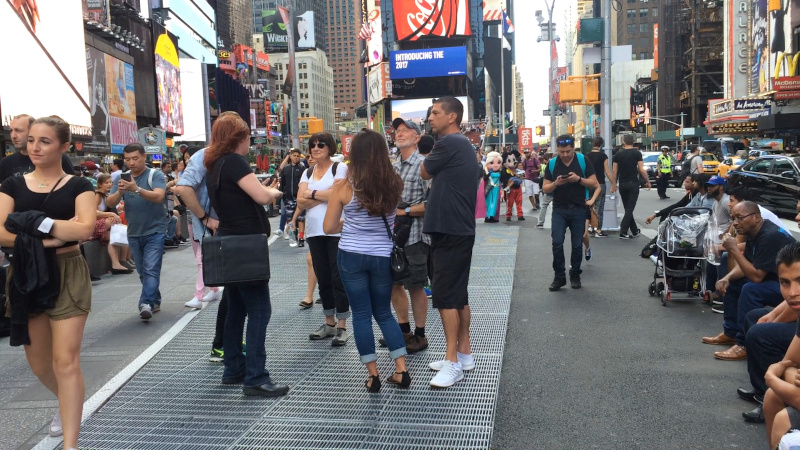
Figure 1. Max Neuhaus, Times Square. Photo: David Chesworth
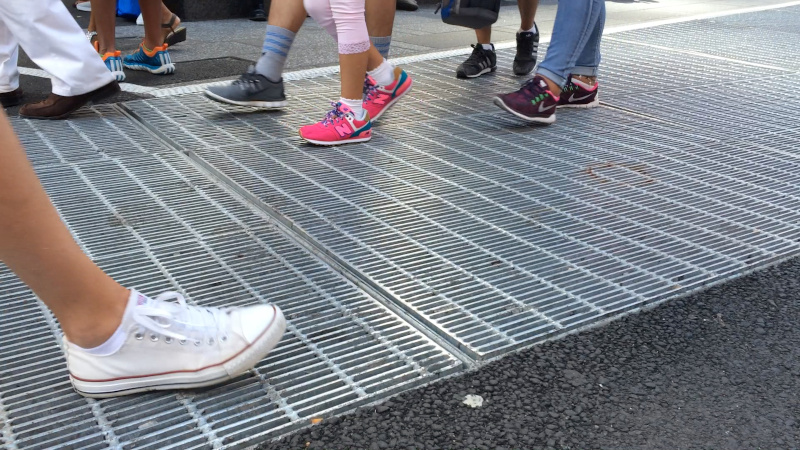
Figure 2. Max Neuhaus, Times Square, grill detail. Photo: David Chesworth
Max Neuhaus, Times Square (documentation). Video: David Chesworth
Neuhaus applied the term ‘soundscape’ in the mid 1970s to describe “sound works without a beginning, middle or end, where the sounds were placed in space rather than in time” (Neuhaus 42). For Neuhaus, the artwork does not just comprise the soundscape, it also resides in the social and visual milieu in which the soundscape is situated:
I create, transform, and change spaces by adding sound […] the installations are related completely to their location. I don’t start to conceive of them until I’m in the actual context; and that context is not only aural but also visual and social (Neuhaus 42).
He wanted encounters with his artworks to be unanticipated by the visitor; an encounter “they could pass through at any time, not something they had to plan to go to” (Neuhaus 43). The encounter then, often manifests for its audience as an unexpected event.
Neuhaus has stated that he carefully composes sound “to change the way we perceive space” (Neuhaus 60). To this end, he creates sonic responses to the environment that are “pitched at the threshold of perception, at a point where people can notice them or not notice them. They [the sounds] are often disguised, almost hidden in their environment” (Neuhaus 61). When the artwork is perceived, the ambiguity in what is heard challenges the perceiver to locate the sound event both physically and contextually: “Traditionally composers have located the elements of a composition in time. …I am interested in locating them, instead, in space, and letting the listener place them in his own time” (Neuhaus 34).
Neuhaus’ soundscapes, while they have musical qualities, do not sound completely musical, nor are they locked into a telos as in conventional musical and text-based work.3 Instead, his soundscapes remain ‘open’ and available to be positioned contextually by the perceiver in their time. Thus, within the soundscape encounter, the perceiver assumes an active role, as a performer/participant and framer of the artwork.
Neuhaus thinks about his sound materially, as an object that he creates: “[In] Times Square it is a large block of sound that you walk into. Even though it is invisible and intangible, it is like a solid place in the middle of this open space” (Neuhaus 98). In this sense the sound’s affect, having no tangible source or cause is thought of as an object that the listener encounters physically and must then contextualise.
Sounds without a knowable source or cause, like the “block of sound” in Neuhaus’s artwork, are known as acousmatic sounds, and they can have an unnerving presence. Philosopher Don Ihde suggests that from a phenomenological point-of-view, “sounds are ‘first’ experienced as sounds of things” (Ihde 60). As acousmatic sounds don’t reference understandable things, they can sometimes be sensed as a threat. These sounds can become reified into imagined things: a threatening animal, a supernatural force or spirit, where the spooky appearance stands-in for the missing source or cause. These are the kinds of sounds that go bump in the night. My experience of Neuhaus’s artwork at Times Square, demonstrated that acousmatic sounds remain palpable affecting forces in the everyday world.4
Max Neuhaus suggested that he placed composed sound into a space rather than in time. However, the sound still possessed a temporal modality, which allowed time for my initial perception, my attempts to find its source or cause and my eventual reification of the acousmatic sound into an object. And so, while the artwork was stirring spatial framing ambiguities, my durational encounter was also allowing a range of aesthetic qualities to emerge over time. I will now consider duration in more detail.
ON DURATION
In his book Bergsonism, Deleuze summarises Bergson’s thesis on Time and Free Will, suggesting that “experience always gives us a composite of space and duration” (Deleuze Bergsonism 37). This composite can be expressed as a duality: space, as the perceived physical world (extensity); and duration as our internal life (intensity). Another way to describe this composite is that of the quantitative (what can be measured in space), and the qualitative (sensations that we feel over the passing of time). Within this composite Bergson suggests that there can be confusion between measurable space and sensed duration, where we tend to treat duration (in which we feel) in terms of space (which we measure). Bergson summarises his point by referring to clock-based, chronological time, where the minutes and seconds are seen to pass as arbitrary yet standardised movements in space on the clock dial, which masks our durational sensing (Bergson Time and Free Will : An Essay on the Immediate Data of Consciousness 107-08).
Our act of composing measurable space with sensed duration is always in play through our sensorimotor processes, including when sensing ambiances and atmospheres. This act is brought into focus when we engage with an artwork. When we physically encounter an artwork before us, we become aware of the framed visible content and, as suggested by Bergson, our durational encounter is usually subordinated. However, our temporal experience remains important as it allows qualitative responses to emerge over time, creating a more complex experience. For, when viewing a painting, or a video artwork, or listening to music, we can experience a range of emotions over time, such as excitement, apprehension, boredom and joyfulness. Our sensory temporal experience is divisible into multiple qualities giving rise to complexity.
Sometimes, as in the case of my encounter with Neuhaus’ Times Square, we encounter sounds that don’t make sense with regard to what we see. This antinomy causes our sensorimotor processes to become confused, causing a gap of indecision to open up and affect us. Bergson suggests that our brains have developed to exploit this gap, allowing us to consider our affections, through our feelings, thoughts, expressions, and actions. And so, as we move through spaces, whether in an art gallery or in urban spaces, we respond to the changing ambiance. In my case, in the middle of New York, this played out as I became unnerved (feelings) by a sound that was enveloping me with an unknowable affecting presence (thoughts) which led me to search (action) for its source and its cause.
Before turning to sonic framing, I want to briefly consider the artwork frame to understand its role and relation to an artwork. Traditionally, an artwork’s frame serves to neatly encapsulate the artwork image for the viewer. However, a frame is achieving much more. It is also creating a perception that the physical artwork is separated from its surroundings. This causes the framed content to become expressive. Elizabeth Grosz, in her discussion of Deleuze and Guattari’s notion of the frame notes:
The emergence of the “frame” is the condition of all the arts and is the particular contribution of architecture to the taming of the virtual, the territorialisation of the uncontrollable forces of the earth. … With no frame or boundary there can be no territory, and without territory there may be objects or things but not qualities that can become expressive, that can intensify and transform living bodies. Territory here may be understood as surfaces of variable curvature or inflection that bear upon them singularities, eruptions, or events (Grosz 11).
A frame might take many forms: a simple or elaborate wooden edging that surrounds a painting; a pedestal on which a sculptural work is placed; an architectural space that frames the artwork together with the visitor and their subjectivity. An artwork can also be contextually framed by its physical connection to the presenting institution or by its connection to the exhibition’s theme.
Once material becomes framed its affecting qualities change. Framing removes it from our quotidian world, and it acquires expressive intensities. Claire Colebrook writes:
A picture in a gallery or even a stained-glass image in a cathedral may well have been isolated from the world of functional action and knowledge so that art in general is expressed in distinction from the world of habit, connections, and work. [T]he power of art [is] to stand alone, to be released from the human eye’s tendency to synthesise its experiences into a world of its own (Colebrook 65).
SONIC FRAMING
Artwork framing is usually sensed in the visual/spatial realm, but what happens with sounds? What is a sonic frame? It has been argued by Michel Chion that sounds possess no frame of their own. A sound cannot be framed to separate it out from an auditory field. Rather, in the case of film and visual media, sound tends to adhere to visual framings by the means of an audiovisual contract, where the audience/viewer agrees that sound occurring within a visual framing is always linked to what is seen (Chion and Steintrager 150-65).
However, in the everyday world, sound does have the capacity to frame. As previously stated, sounds are ‘first’ experienced as sounds of things, but the sounds themselves are not those things, rather, they sonically frame those things. Ihde also suggests that a ‘secondary’ experience of sound is gained when we locate a sound relatively within the “global” character of primary experience, which frames that sound within its surrounding environment (Ihde 61). So, sound is framing both the thing and its location in relation to the surrounding milieu. But also, as the thing’s sound echoes off buildings and mountains it reverberates within different spaces, giving the listener a sense of the shape of the physical space in which the thing or listener is located. Additionally, sound can describe the existence of spaces that surround us that remain invisible to us, such as when we hear a sound reverberating through a large building from rooms that are out of our line-of-sight. We might hear a dog barking up the street, or a buzzing power tool from a building site. These sounds describe spatial extensions we might not be in a position to actually see. Our sonic and visual framings can therefore present sensory inconsistencies that create perceptual ambiguities which can confuse our sense-making. In our daily life, our sensorimotor processes must work hard, in the background, coalescing the conflicting messages from these and our other senses into a unified understanding. The Times Square artwork exploits this ambiguity of framing as it unnerves the visitor whose sensorimotor processes struggle to comprehend the reality of the physical block of sound that they have walked into.
There are other ways to consider sound in relation to framing that might also elucidate the role of the frame in translating ambiance. Three are considered here. Firstly, sound has the capacity to frame through its signaling. In athletics, the sound of the starting gun initiates the beginning of a race. In longer races a bell is heard to signal the last lap. These signals frame expressive content and its context in a similar way to an artwork’s frame.
Secondly, because sound exists in time, the perceived beginning, continuation and ending of any sound, or of a grouping of sounds such as wind in the trees, a car passing, or even a musical composition, is a temporal framing. This framing might be created by the duration of the sound event itself or by the amount of time the perceiver is in proximity to the sound. Either way, each sound in the environment is framing time, just as time is also framing that sound. Each sonic framing is a parcel of causal flow that expresses forces of individual scenes and stories within the milieu. And as we have previously discussed, durations of sound can also frame our aesthetic responses, where qualities are individually sensed as we experience the sound in time. These examples show how sound can initiate temporal and spatial framings that are potentially antinomic in relation to visual framing as they utilise sensory modalities that exist concurrently, but which are ontologically different. 5
Thirdly, sonic framing is involved when we consider the screen as another kind of experiential frame. In Cinema 1, Deleuze suggests visual and sonic content, when framed in the cinematic shot, becomes a specific “point of view on the set of parts” (Deleuze Cinema 1: The Movement-Image 15). This is a relatively closed system, as the cinematic frame sets physical and dynamic limits. Frames separate elements but conversely they also bring things together. However, according to Deleuze, “all framing determines an out-of-field…that is neither seen nor understood”(Deleuze Cinema 1: The Movement-Image 16). Deleuze, through Bergson, suggests that this out-of-field is contained in the set of a larger frame with which the first frame communicates, and that larger frame can itself also be contained within an even larger frame with which it, and all sub-frames communicate, and so on.
And so, in the case of cinematic experiences, when we encounter sounds and ambiences that describe spaces that extend beyond the geometric framing of the screen, we tend to agree that this is telling us about a world beyond the screen’s frame that relates to the screen’s actual content. Even when non-diegetic music is used within a film, there is some kind of contract or thread in place linking the framed content with the music. Through the cinematic frame we embrace the existence of concrete and virtual worlds outside its borders. Sound, because of its expanding nature, is very useful in mediating this kind of framing. Sound extends the cinema screen’s framed content outwards, beyond the flatness of the screen, where it envelops us, so that we, as participants, are situated spatially and temporally within both the screen’s content and its out-of field ambiences. It is argued by Deleuze, through Bergson, that cinematic images are constantly in-play in our quotidian lives (Deleuze Cinema 1: The Movement-Image). And so, having defined aspects of the sonic frame, including the cinematic, I will apply them to experiences I had while exploring artworks at Dia:Beacon.
SONIC FRAMING AT DIA:BEACON
Many of the artworks at Dia:Beacon appear to confuse framing, sometimes attempting to do away with a frame altogether.6 Minimalist sculptures are not mounted on plinths like most sculptures but sit directly on the floor along with the visitor, and so, remain in our world rather than being removed from it by framing. Many artwork frames appear to be empty of content. Encountering these works for the first time, I wondered, what it was I was supposed to be looking at? These ambiguous framings and experiential voids were unnerving. Some artworks were like ghostly voids, that appeared to be surveilling me, as though I was the real subject of the encounter.
Spending several days at the art museum enabled me to experience and study these framing ambiguities and how they challenged my artwork encounter. If there is a confusion of framing and an absence of viable content then what, if anything, is being expressed in the encounter? I had always been troubled by my experience of minimalist sculptures. Something about their presence before me was unnerving, it was as though they were sentient. It was only much later that I came across Michael Fried’s famous 1967 essay “Art and Objecthood” that criticised, but also accurately identified that minimalist art denied the audience what Fried considered to be an artworks necessary evocation of an instantaneous, “perpetual present” (Fried 167). Instead, Fried suggested, minimalist art “persists in time”, is “anthropomorphic”, and “degenerates as it approaches the condition of theatre” (Fried 164).
Ambient sound also played a significant role in my equivocal experiences of the Dia:Beacon artwork framings. Finding artwork frames ‘empty’, I was exposed to pure duration with no visible interest, and so I moved on to other artworks in search of content. Occasionally, I shifted my awareness to the quotidian soundscape that was leaking in and resonating throughout the Dia:Beacon expanse and was constantly spilling into gallery spaces and into the notional artwork framings. I will now consider the framing implications of these ambient sounds on two of the installations I experienced, Gerhard Richter’s 6 Gray Mirrors and Robert Ryman’s Installation at Dia Beacon.
Installation 1: GERHARD RICHTER - 6 GRAY MIRRORS
Gerhard Richter’s 6 Gray Mirrors is situated in a large reverberant room that resembles a small chapel set within the huge cathedral-like environment of the post-industrial Dia:Beacon complex. The room has a high clerestory open to natural light, which, notably, is the only light source, and which originates outside the artwork’s room that frames the artwork. Nearly all artworks at Dia:Beacon are lit this way, whereas in most galleries artworks are lit internally and views to the outside world are often denied.
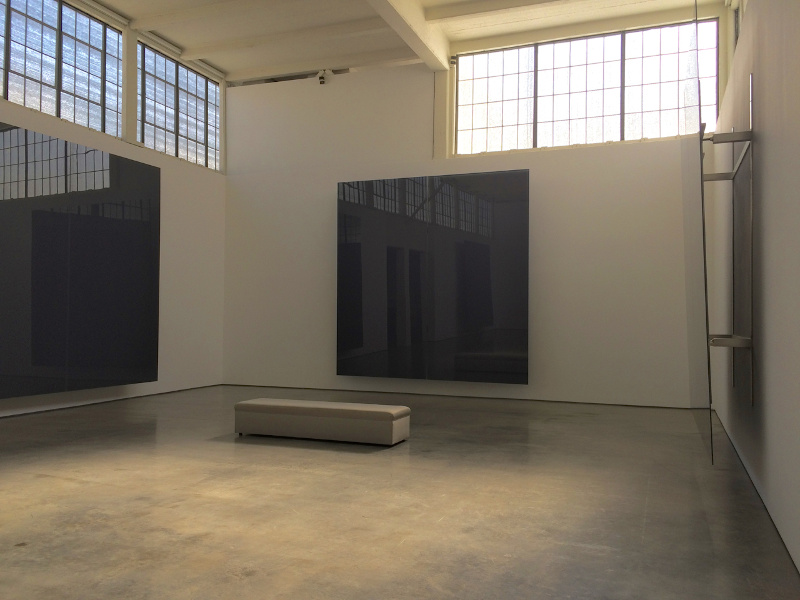
Figure 3. Gerhard Richter, 6 Gray Mirrors. Photo: David Chesworth
The six large gray rectangular panels attached to the walls posed before me like paintings, their mirrored surfaces opaque. Their antinomic framings of visual content posed questions about my subjectivity and my objective act of viewing: was I looking at the gray mirror surfaces, or at the world reflected in them? The grayness of the reflections raised questions about just how real or constructed reality is. As there was not much content to look at, I became aware of ambient sounds within Richter’s space. These sounds that originated from throughout Dia:Beacon and beyond, reflected off the hard surfaces of the mirrors, walls and concrete floor and became focused within his space. Curiously, I noticed that, like the mirrored artworks, the sonic ambience also subtly scored a dual spatiality: I could hear reflected sounds that sonically rendered the physical dimension of Richter’s framing room, and I could aurally perceive sounds made in other spaces, beyond the artwork’s frame, describing other parts of the Dia:Beacon building and sounds from the Beacon township outside. The presence of antinomic reflected sound and antinomic vision therefore complicated my encounter through its oscillation of sensory and conceptual reinforcements and disjunctions which were ultimately incommensurable. The oscillation of antinomic framings caused me to equivocate between spatial and durational modalities. However, rather than being a distraction, I found these ambiguities intriguing and a significant contributor to my artwork experience, where sensory modes and my subjective and objective realities were constantly recomposing.
While Richter’s room at Dia:Beacon actively frames, and makes expressive, the set of large gray mirrors, the room was also experienced cinematically as it framed out-of-field sounds, including other unseen spaces within Dia:Beacon, and ambiences from the township of Beacon. All these frames with their expressive content were communicating with each other to varying degrees, through sound’s leaky and ubiquitous material presence.
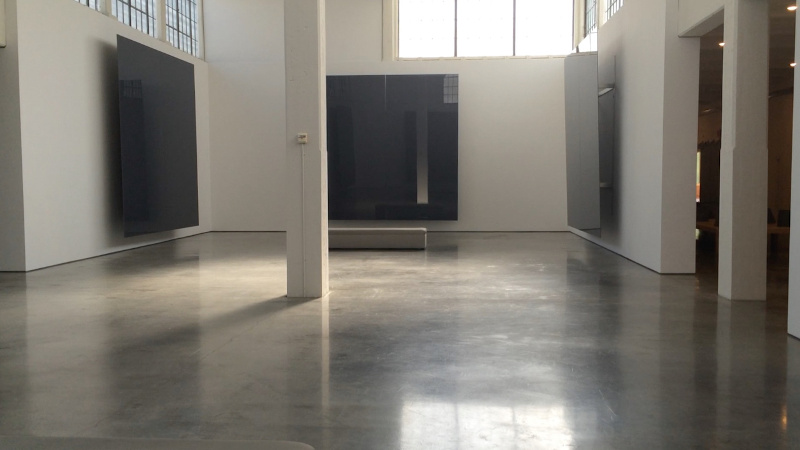
Figure 4. Gerhard Richter, 6 Gray Mirrors. Photo: David Chesworth
Out-of-field sounds in Gerhard Richter’s 6 Gray Mirrors at Dia:Beacon (documentation). Video: David Chesworth
6 Gray Mirrors’ out-of-field sounds comprising human vocalisations and footsteps occurring outside Richter’s space are reflected and concentrated within his space. Note: this example has not been edited to condense the listening experience. This is because the very point of this example is for you to sense the sounds in real time and to observe how your feelings change over the course of listening. (best to wear headphones). In the documentation, between 3:30 and 4:20 a train can be heard passing close-by. Between 5:50 and 7:20 Neuhaus’s audio artwork Time Piece Beacon can be heard penetrating Richter’s artwork.
Background sounds leaking into 6 Gray Mirrors, were framed by the artwork where they become focused and expressive. When actively listened to, components of the ambience became identifiable. I could hear sounds originating from inside and outside the building: reverberations of squeaky shoes on floorboards, distant conversations, door slams, the horn from a train pulling into Beacon station—all these sounds enacted stories that detailed the becomings of the surrounding world. It was as though the voided surfaces of Richter’s mirrors, mounted just off the walls on special brackets, each slightly tilted on an angle, were actively listening on my behalf, framing and deflecting sounds that were describing the sources and causes of the ever-evolving surroundings. And so, at Dia:Beacon, rather than the artwork’s frame causing the artwork to be removed from the world, the quotidian world instead, became sonically framed within the artwork experience.
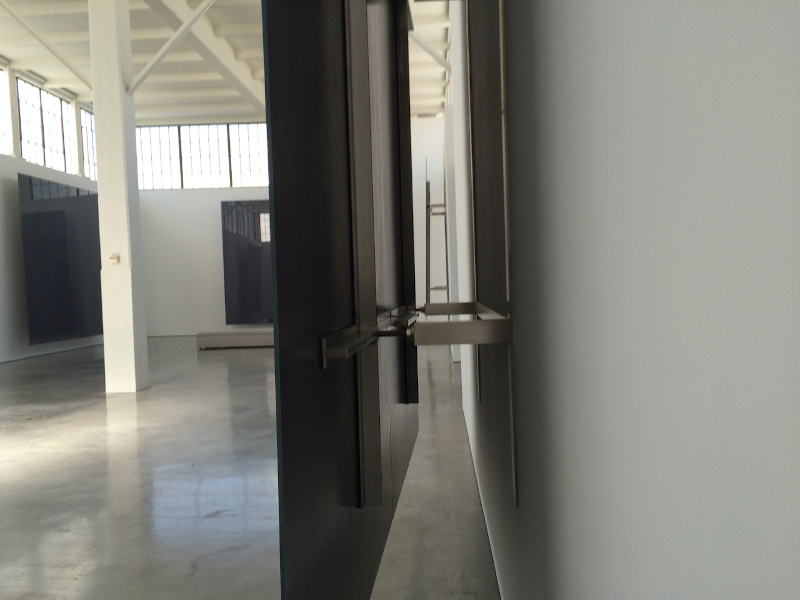
Figure 5. Gerhard Richter, 6 Gray Mirrors. Wall mount detail. Photo: David Chesworth
Sensing ambiance, in terms described by Jean-Paul Thibaud, as a “sensory unification” or as a “coalescence that blurs focusing” (Thibaud 43) was still available to me, but it became a secondary consideration. The forces present, framed by competing sensory modalities became too expressive to ignore. The artwork’s framing ambiguities caused an oscillation in my objectivity and subjectivity between beholding the visual/spatial frame in the present moment and temporal sonic framings.
My sensing of Richter’s 6 Gray Mirrors revealed Thibaud’s notion of ambiance’s complexity and interdisciplinarity that includes “articulating built forms, sensible forms and social forms [revealed through analysing] sound effects, frames of visibility, ambient objects” (Thibaud 40). Through spatial and durational framing, ambiance became translatable, as each framing presented a different system of expressive components. As I experienced the different framings, I experienced an interplay between these systems. Deleuze calls this is a machinic agency where there is,
movement which is established between the parts [components] of each system and between one system and another, which crosses them all, stirs them all up together, and subjects them all to the condition which prevents them from being absolutely closed. … It is a mobile section, a temporal section or perspective. It is a bloc of space-time. … There is even an infinite series of such blocs … This is not mechanism, it is machinism (Deleuze Cinema 1: The Movement-Image 59).
In my experience, this implicated the artwork, the gallery and the open whole of worldly becomings. This transformed my artwork experience from one of emptiness to sensing my complete embeddedness as a component within a machinic world.
Installation 2: ROBERT RYMAN - INSTALLATION AT DIA BEACON
I have spoken about the out-of-field sounds that I became consciously aware of within Richter’s installation. I suggest that at Dia:Beacon, I might have also been affected by my memory of sounds that I didn’t consciously realise I had previously heard, and which continued to qualitatively inform me.
According to Henri Bergson our sensorimotor processes draw on memory and habit in our day-to-day understanding of the surrounding world (Bergson Matter and Memory). At Dia:Beacon, I wandered through the three adjoining rooms of Robert Ryman’s large collection of mostly monochrome paintings, simply titled, Installation at Dia Beacon. I became immersed in the ghostly whiteness of his paintings. They appeared to be loitering on the walls, arranged in different groupings, gazing back at me. In my notes at the time, I imaginatively compared my experience to that of being overcome by a continual featureless hissing sound, like the sound of an all-pervading and claustrophobic white noise. For some reason, my experience evoked this sonic analogy. For, just as the colour white contains all of the colour frequencies, so white noise contains all sonic frequencies. And while existing spatially and durationally, white noise has no telos.
When I returned to the museum a couple of years later to study the artworks in more detail, I was surprised to discover that Ryman’s artwork did indeed contain the sound of white noise. For, it turned out that his installation rooms were located next to a noisy air-conditioning vent situated in a connecting corridor, and where, on warm days, the increased air flow created a loud hissing sound. During my earlier visit, I had sensed the durational and spatial presence of white noise without actively listening to it. It is possible that my sub-conscious framing of this hissing during my first visit had affected my experience of the paintings. For, throughout the earlier visit, I felt that the paintings themselves, with their minimal content and overall spatial whiteness, had become reified into temporal surveilling objects that loitered around the rooms. This reification was possibly caused by my subconscious sensing of the acousmatic white noise, as another kind of sonic framing.7
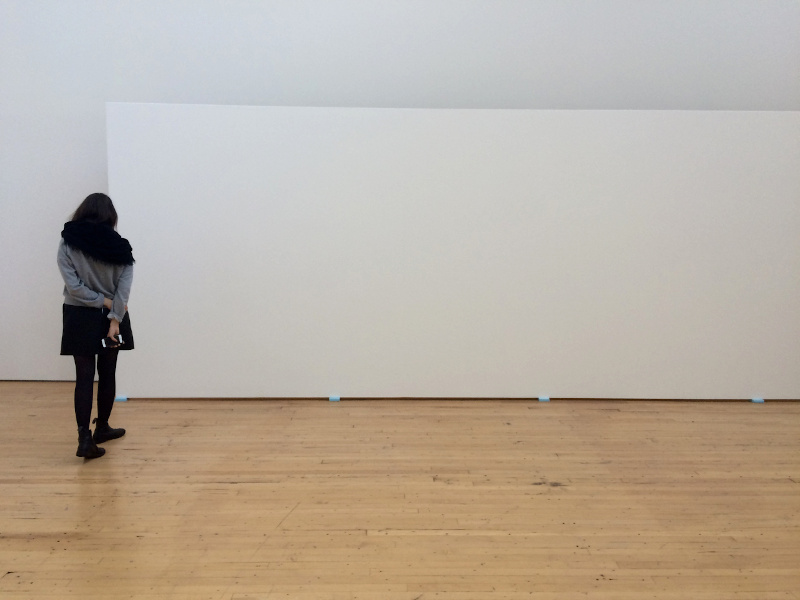
Figure 6. Robert Ryman, Installation at Dia Beacon. Detail. Photo: David Chesworth
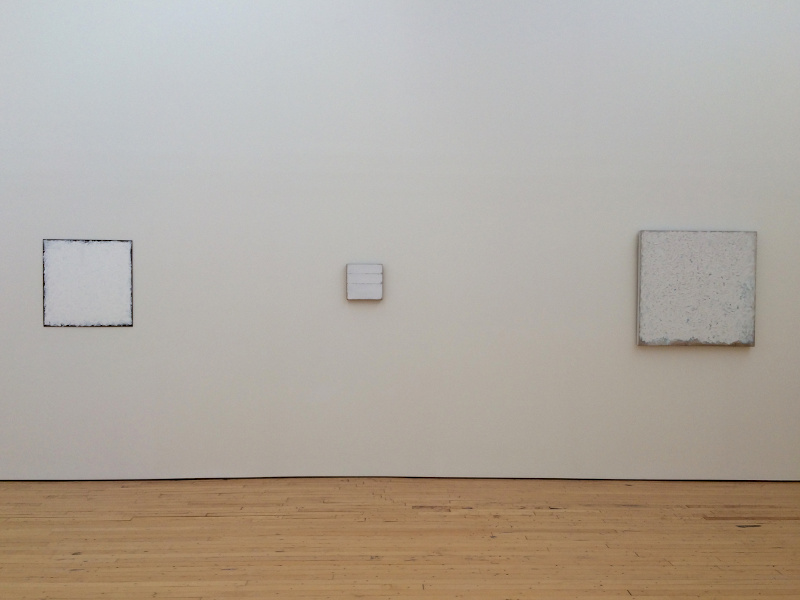
Figure 7. Robert Ryman, Installation at Dia Beacon. Detail. Photo: David Chesworth
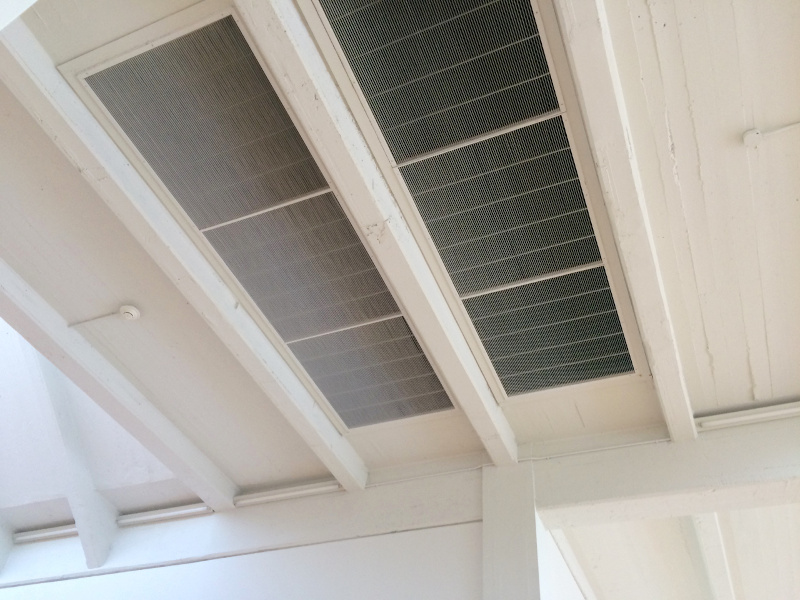
Figure 8. Air duct outside Robert Ryman’s installation rooms. Photo: David Chesworth
Installation at Dia Beacon, Robert Ryman (documentation of walk-through from southern entrance). Video: David Chesworth
The video documentation is a walk-through of Ryman’s rooms from the south entrance. Large air-conditioner vents are located in the adjoining corridor. The sound of the air-conditioning is apparent in all rooms but diminishes in intensity as I move from the source.
CONCLUSION
My artwork experiences – in a public space at Times Square and in the art museum, Dia:Beacon – responded to a range of sensory modes. The sonic register instigated different kinds of framing: spatial, durational, as well as contextual framings derived through my sensorimotor processes. The minimalist artworks, with their framing ambiguities and their considered reductions in expressive content, caused spatio-temporal antimonies and exposed periods of affecting indetermination: where is the content? The artworks that I initially sensed as empty of content, became spatial, durational, and cinematic. These framings, both mine and the artworks’ framings, focused content that became expressive as they drew attention to out-of-field sounds. Through my encounter I became a perceiver, performer, and a translator of different modalities of space and duration within ambiance. Durational experience permitted feelings to emerge. Acousmatic listening created phantom objects (indeed, the kind of ambience spelt with an ‘e’ might well be thought of as an acousmatic object). And cinematic framing caused out-of-field sonic framings.
At Dia:Beacon, the artworks’ framed surfaces became reified into auditory membranes that framed the world in different ways, on my behalf. Where Michael Fried famously saw durational experience as the problem with minimalist artworks, for me, the Dia:Beacon artworks' temporal modalities revealed a situatedness that could be described as post-cinematic. Sometimes the frames were robust and at other times they were transgressed by the expressive forces of competing modalities. In this machinic interplay between an “aesthetics of production” and an “aesthetics of reception” (Bölhme 168) ambiance was translated into its component parts. Max Neuhaus’ Times Square is surrounded by a multitude of moving-image billboards. The artwork provides an example of how the attention economy is challenged through sonic framings that open up new sensory modes for awareness and thought. Gerhard Richter’s 6 Gray Mirrors demonstrates how antinomic framings reveal new experiences of situatedness. Robert Ryman’s Installation at Dia:Beacon shows how sonic resonances subtly frame the theatricality of the present moment, which we carry forward, as memories, into new experiences.
WORKS CITED
Hearing. Ed. Moore, Brian C. J. San Diego: San Diego : Academic Press, 1995. Print.
Bergson, Henri. Matter and Memory. Eds. Dowson, M. E. B, et al. London: New York: London : G. Allen and Co., Ltd.
New York : Macmillan Co., 1913. Print. —. Time and Free Will : An Essay on the Immediate Data of Consciousness. Ed. Pogson, Frank Lubecki. 3rd ed. ed. London: London : G. Allen, 1913. Print.
Böhme, Gernot. The Aesthetics of Atmospheres. Ed. Thibaud, Jean-Paul. Routledge: London, 2016. Print.
New York, New York: Routledge, Taylor and Francis Group, 2017. Print.
Chesworth, David. “Why All the Noise? An Exploration of Auditory and Durational Encounters of Four Artworks at Dia:Beacon, New York State, USA; How These Artworks and My Practical Research Function as Machinic Systems of Cinematic Thought.” Monash University, 2018. Web.
Chion, Michel author, and James A. Steintrager. Sound : An Acoulogical Treatise. Ed. Steintrager, James A. translator writer of introduction. Durham: Duke University Press, 2016. Print.
Colebrook, Claire. Deleuze : A Guide for the Perplexed. London: Continuum, 2006. Print.
Cox, Christoph. “Installing Duration: Time in the Sound Works of Max Neuhaus.” Max Neuhaus: Time Square, Time Piece Beacon. Eds. Cooke, Lynne editor, Karen J. editor Kelly and Barbara editor Schröder: Dia Art Foundation, 2009. 113-33. Print.
Deleuze, Gilles. Bergsonism. New York: New York : Zone Books, 1988. Print. —. Cinema 1: The Movement-Image. Trans. Tomlinson, Hugh and Barbara Habberjam. Cinema One : The Movement-Image. London: London : Continuum, 1986. Print.
Fried, Michael. Art and Objecthood - Essays and Reviews. Artforum 5 (June 1967) : p12-23. University of Chicago Press, 1998. Print.
Grosz, E. A. Chaos, Territory, Art : Deleuze and the Framing of the Earth. New York: New York : Columbia University Press, 2008. Print.
Ihde, Don. Listening and Voice : A Phenomenology of Sound. Athens: Athens : Ohio University Press, 1976. Print.
Kane, Brian. Sound Unseen : Acousmatic Sound in Theory and Practice. New York : Oxford University Press, 2014. Print.
LaBelle, Brandon. Background Noise : Perspectives on Sound Art. Perspectives on Sound Art. New York: New York : Continuum International, 2006. Print.
Lacey, Jordan Sonic Rupture : A Practice-Led Approach to Urban Soundscape Design. New York, NY
London, UK: Bloomsbury Academic, an imprint of Bloomsbury Publishing Plc, 2016. Print.
Morton, Timothy. “Charisma and Causality.” ArtReview (2015). Web. May 30 2020.
Neuhaus, Max. Max Neuhaus : Inscription Sound Works. Vol. 1. 3 vols. Ostfildern: Ostfildern : Cantz, 1994. Print.
Thibaud, Jean-Paul. “The Backstage of Urban Ambiances: When Atmospheres Pervade Everyday Experience.” Emotion, Space and Society 15.C (2015): 39-46. Print.
- For further information about my public installation practice see www.leberandchesworth.com.↩︎
- To attempt to differentiate the two terms, ambiance (spelt with an “a”) is often pronounced in English with a French sounding inflection.↩︎
- Telos (the root word of teleology) refers to the purpose or goal of a thing. A musical telos indicates to the listener that they are experiencing a musical journey that will build towards some kind of arrival point or resolution. Both ambient and minimalist music usually have no telos, instead relying on other ways to create temporal interest.↩︎
- For a comprehensive discussion of acousmatic sound see (Kane).↩︎
- Sound can also appear to the listener as a symbolic signifier. A detailed discussion of this modality falls outside the scope of this essay.↩︎
- Several years ago, I became intrigued when I visited Dia:Beacon, a large art museum situated in a repurposed mid 20th century factory in upstate New York. The museum predominantly exhibits artworks that are informed by post-minimal and post-conceptual ideas. Many of the exhibited artworks employ reduced visual content. Artworks might consist of monochrome canvases or subtle applications of paint, minimal markings and uniform industrial finishes. As I physically encountered these Western canon artworks for the first time, I had little contextualising foreknowledge that might have otherwise taken the edge off my encounter.↩︎
- There are other significant artworks at Dia:Beacon where sonic framings can be discerned, including Louise Lawler’s Birdcalls, 1972/81. I discuss at length Time Piece, Beacon (2005) by Max Neuhaus in my PhD thesis (Chesworth).↩︎

